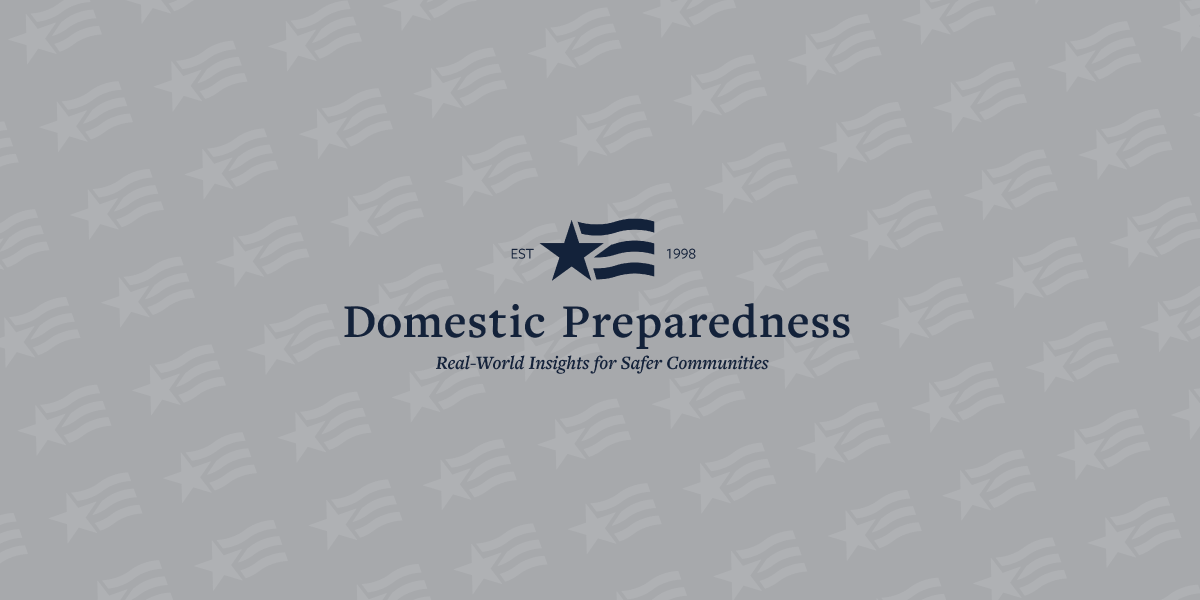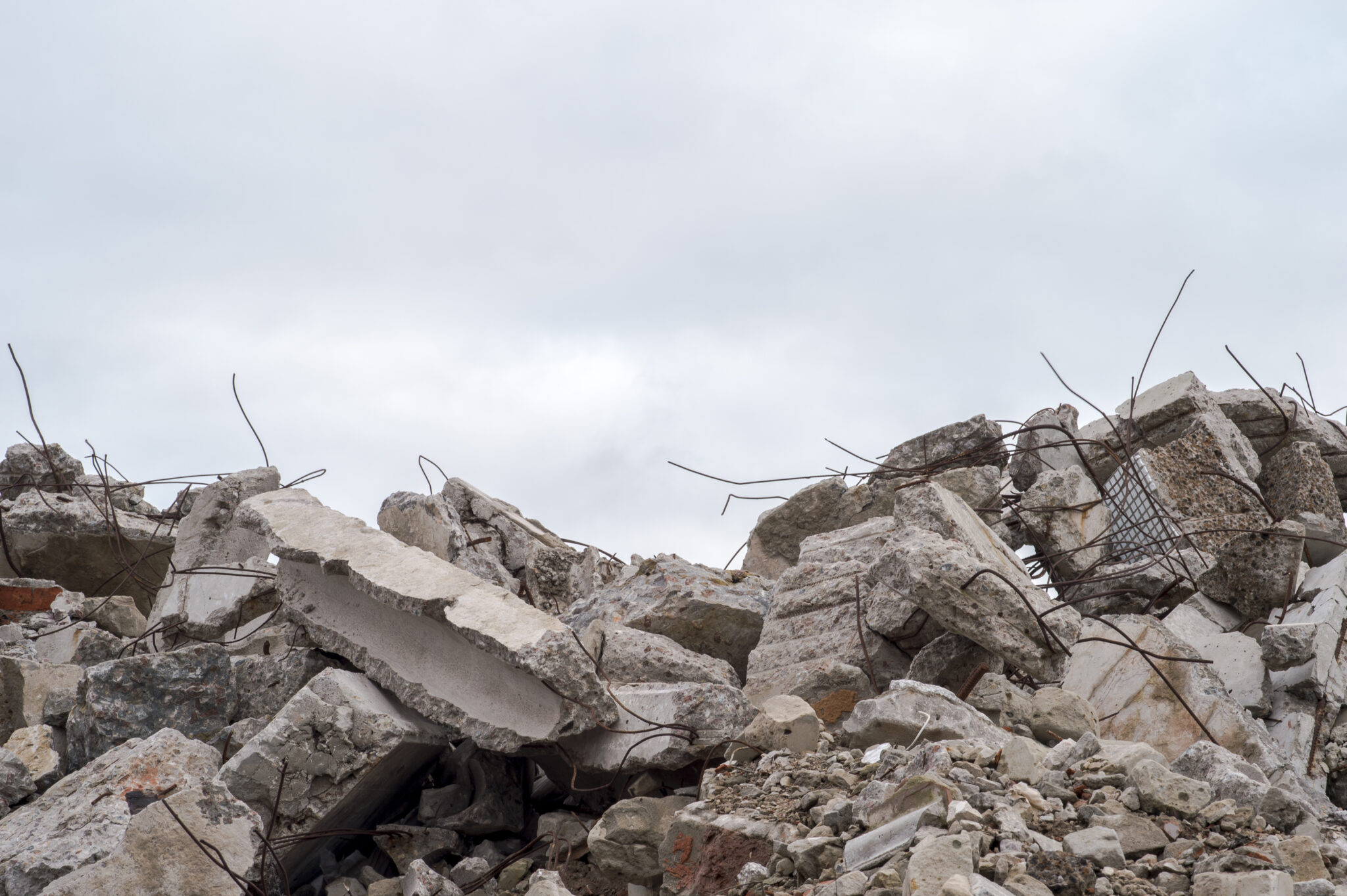Most recently published

Interpol’s New Bioterrorism Guide: Incident Pre-Planning and Response
Michael Allswede
July 12, 2006
The world’s largest international police organization has developed and is disseminating a new “how-to” manual to help member agencies cope with the increasingly lethal threat posed by transnational terrorist groups.

Publishers Message; First Half of 2006 Exceeds Expectations
Martin D. Masiuk
July 5, 2006
Shifting to a weekly format, providing timely, concise solutions from professionals to professionals has been a hit with a growing audience.

Privatizing War? PMCs: The Invisible Force Multiplier
Neil C. Livingstone
June 28, 2006
Following the constitutional precedent established by the issuance of Letters of Marque and Reprisal, PMCs contributions may become critical to success on the Global War on Terrorism. Will the question of legality withstand the test?

Terrorism: The Cyberspace Battleground
Thomas Kellerman
June 14, 2006
Yesterday’s hackers have become today’s cyber criminals, & tomorrow could be cyber terrorists. Technology marches on, providing new opportunities both for human progress and for those fixated on destroying Western civilization and the infidel economy.

Toronto and the U.S. Canadian Border: What Should and Should Not Happen Next
Christopher Doane and Joseph DiRenzo III
June 7, 2006
The arrest of 17 terrorists last weekend in Toronto has led to calls for tightened U.S. security on its northern border. That is probably part of the answer, but not necessarily the most important or most effective way to proceed.

A Long List of Questions; A Very Short List of Answers
Jerry Mothershead
May 24, 2006
The administration’s development and release of an “Implementation Plan” to deal with pandemic influenza is a helpful start – but no more than that. Few if any states or cities are taking the steps needed to protect their citizens.

The Creation of New Surge Capacity
Michael Allswede
May 24, 2006
Very few U.S. hospitals have enough beds, operating rooms, or the medical staff & equipment needed to deal with a truly major disaster. Many warnings have been issued, but no plans are yet in place to deal with a worst-case scenario.

Lt. Gen. H. Steven Blum, Chief to the National Guard Bureau
John F. Morton and H. Steven Blum
May 17, 2006
Podcast DomPrep’s John Morton met with Lieutenant General H. Steven Blum, Chief, National Guard Bureau.

Dr. Denis Onieal, Superintendent, FEMA’s National Fire Academy
John F. Morton and Denis Onieal
May 10, 2006
Podcast Dr. Onieal discusses professional development of skills for terrorist-incident response in the context of development of standard fire-service skills. An overview of the NFA curriculum http://www.usfa.fema.gov/ and the linkages to state training systems.The Professional Development Model curriculum for college-level fire science students. Oklahoma State University’s international journal of fire-service leadership and

Tags of Survival: The Start System
Joseph Cahill
May 3, 2006
The triage goal is to maximize the number of lives saved. But to do so requires some extremely difficult decisions from the EMT on the scene, particularly in mass-casualty incidents when time is limited and information is in short supply.

Triage Strategies for Hazardous Materials Mass-Casualty Incidents
Duane Caneva
May 3, 2006
What are the best indicators of victim survivability? The RPMs provide a few clues that can be used to START processing. But continuing updates and additional analyses are needed to improve the decision-making process.

Beans, Bullets, and Boxcars: DOD and the Private Sector
Luke Ritter
April 26, 2006
The first question a President asks in times of international crisis is “Where are the carriers?” The first question contingency planners ask is “Where are the cargo ships?” Meanwhile, warfighters are asking “How much fuel & ammunition do we have?”

The ABCs of NIMS and the ICS
Joseph Cahill
July 12, 2006
EMS agencies have been assigned major new responsibilities under both the NIMS and the ICS. The key to “mission accomplished” will be the ability of agencies from adjoining states to submerge personal identities & work toward a common goal.

Interpol’s New Bioterrorism Guide: Incident Pre-Planning and Response
Michael Allswede
July 12, 2006
The world’s largest international police organization has developed and is disseminating a new “how-to” manual to help member agencies cope with the increasingly lethal threat posed by transnational terrorist groups.

Publishers Message; First Half of 2006 Exceeds Expectations
Martin D. Masiuk
July 5, 2006
Shifting to a weekly format, providing timely, concise solutions from professionals to professionals has been a hit with a growing audience.

Privatizing War? PMCs: The Invisible Force Multiplier
Neil C. Livingstone
June 28, 2006
Following the constitutional precedent established by the issuance of Letters of Marque and Reprisal, PMCs contributions may become critical to success on the Global War on Terrorism. Will the question of legality withstand the test?

Terrorism: The Cyberspace Battleground
Thomas Kellerman
June 14, 2006
Yesterday’s hackers have become today’s cyber criminals, & tomorrow could be cyber terrorists. Technology marches on, providing new opportunities both for human progress and for those fixated on destroying Western civilization and the infidel economy.

Toronto and the U.S. Canadian Border: What Should and Should Not Happen Next
Christopher Doane and Joseph DiRenzo III
June 7, 2006
The arrest of 17 terrorists last weekend in Toronto has led to calls for tightened U.S. security on its northern border. That is probably part of the answer, but not necessarily the most important or most effective way to proceed.

A Long List of Questions; A Very Short List of Answers
Jerry Mothershead
May 24, 2006
The administration’s development and release of an “Implementation Plan” to deal with pandemic influenza is a helpful start – but no more than that. Few if any states or cities are taking the steps needed to protect their citizens.

The Creation of New Surge Capacity
Michael Allswede
May 24, 2006
Very few U.S. hospitals have enough beds, operating rooms, or the medical staff & equipment needed to deal with a truly major disaster. Many warnings have been issued, but no plans are yet in place to deal with a worst-case scenario.

Lt. Gen. H. Steven Blum, Chief to the National Guard Bureau
John F. Morton and H. Steven Blum
May 17, 2006
Podcast DomPrep’s John Morton met with Lieutenant General H. Steven Blum, Chief, National Guard Bureau.

Dr. Denis Onieal, Superintendent, FEMA’s National Fire Academy
John F. Morton and Denis Onieal
May 10, 2006
Podcast Dr. Onieal discusses professional development of skills for terrorist-incident response in the context of development of standard fire-service skills. An overview of the NFA curriculum http://www.usfa.fema.gov/ and the linkages to state training systems.The Professional Development Model curriculum for college-level fire science students. Oklahoma State University’s international journal of fire-service leadership and

Tags of Survival: The Start System
Joseph Cahill
May 3, 2006
The triage goal is to maximize the number of lives saved. But to do so requires some extremely difficult decisions from the EMT on the scene, particularly in mass-casualty incidents when time is limited and information is in short supply.

Triage Strategies for Hazardous Materials Mass-Casualty Incidents
Duane Caneva
May 3, 2006
What are the best indicators of victim survivability? The RPMs provide a few clues that can be used to START processing. But continuing updates and additional analyses are needed to improve the decision-making process.
Moussaoui: A Murderer Who Deserves to Die!
Neil C. Livingstone
April 26, 2006
He is a buffoon, a clown, a danger to his own people. Most important of all, though, Zacarias Moussaoui is a mass murderer who knows right from wrong and should be sentenced to death.
It Is Time for a National I.D. Card
Neil C. Livingstone
April 19, 2006
“Immigration Reform” is one of the most important, and most controversial, issues now facing the American people. But no reform bill being considered would work without a requirement for verifiable identification included.
Spotlight Report: Weldon Meets With Fire Service Leaders
John F. Morton
April 12, 2006
Rep. Curt Weldon (R-Pa.), founder of the Congressional Fire Caucus, discusses current programs and future funding prospects with CFSI leaders on the occasion of the annual National Fire and Emergency Services Dinner.
Army Focuses Inland In Latest Realignment
Brent Bankus
March 22, 2006
A major reshuffling of U.S. First Army and U.S. Fifth Army roles and responsibilities will result in more military muscle being made available for homeland security and the increasingly important DSCA (Defense Support of Civilian Authorities) mission.
Rx: A Medical Support Plan for Homeland Defense
Duane Caneva
March 22, 2006
Federal, state, and local disaster-preparedness plans all emphasize the need for adequate medical support. But very little has yet been done to ensure that such support will in fact be available when it is actually needed.
EMS Hazardous Duty: Not for the Meek
Joseph Cahill
March 22, 2006
The members of EMS units are among the first to respond to major disasters in their home communities. They also are on the front lines of danger, particularly in HazMat incidents, and for that reason alone must be among the best prepared & protected.
Jack Beall, Director, National Disaster Medical System (NDMS)
Jack W. Beall
March 22, 2006
Beall discusses DMATs (Disaster Medical Assistance Teams) and other DMS components, the missions of each, and their working relationships with one another.
Evacuation Planning: A Long, Long Way to Go
Joseph Cahill
March 8, 2006
In the years and months after the 11 September attacks, a great deal of work has been done at the federal level both to improve overall domestic preparedness and to standardize the response methods prescribed to deal with major disasters. Homeland Security Presidential Directives (HSPDs) 5 & 8 directed the
The Role of Medical Systems in Homeland Defense
Michael Allswede
March 8, 2006
U.S. medical system is the world’s finest in many respects. However, few if any American hospitals are properly staffed & equipped to deal with this year’s hurricanes, much less one or more new terrorist attacks that could cause thousands of casualties.
Isolation & Quarantine: How, When, and How Much
Jerry Mothershead
March 8, 2006
From the Black Plague through colonial days to SARS outbreaks, the practice of isolating infected people from the rest of society has been considered a necessary evil. It has not always been a helpful one, & healthcare professionals have paid the price.
Dennis Atwood, National Program Manager, MMRS
John F. Morton and Dennis Atwood
March 8, 2006
The MMRS national program manager discusses the program & comments on how local MMRS managers are planning to use community resources to respond to mass-casualty events until external assistance arrives and is operational.
Funding Strategies for EMS Decision Makers
Mary Ungar
February 22, 2006
The huge increase in responsibilities assigned to EMS managers in recent years requires additional funding, and additional time as well. The latter is hard to come by, but DHS and HHS grants will provide significant new funding resources.
Follow Us
Get Instant Access
Subscribe today to Domestic Preparedness and get real-world insights for safer communities.


